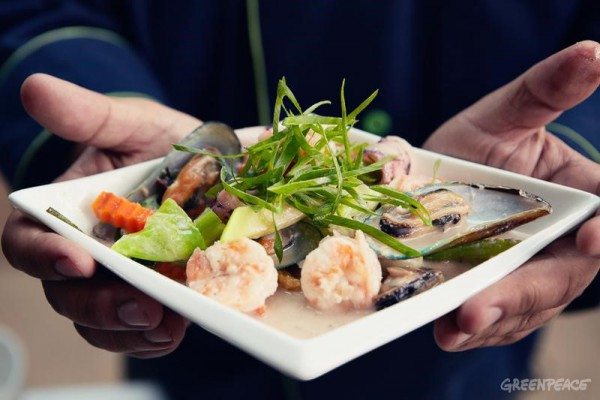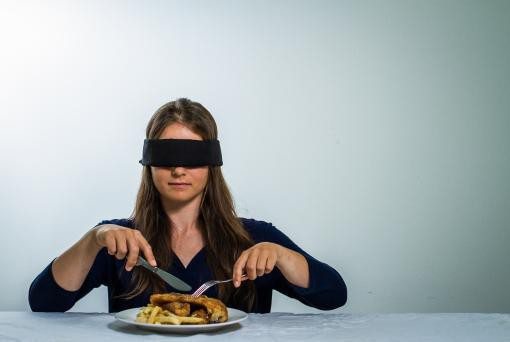
Do you know what you’re putting in your mouth? Chances are, when it comes to seafood, you probably don’t.
The SBS TV series ‘What’s the Catch’, shocked many Australians by showing us the startling truth about seafood consumed in Australia. Much of it is imported, sometimes many other sea creatures are killed in the process then discarded as ‘waste’, and some may even be harmful to our health.
The most shocking revelation from the show is that all this is hidden from us. Why? Because of our completely inadequate seafood labelling laws. Order the special at your local fish and chip shop and little do you know you could be eating a vulnerable species! (In episode 2, the show’s host Matthew Evans, ordered flake and chips and was given school shark – listed by the IUCN as vulnerable).
How can we make the right choices, when we’re not even given the facts?
It’s like we’re eating in the dark.

So while the series is over, the demand for better seafood labelling continues – and is growing stronger every day. There’s a senate enquiry going on right now. With senators hearing from experts all around the country, to decide if Australian consumers should be told what they’re eating, where it came from and how it was caught or farmed. So let’s keep putting on the pressure – over 25,000 people have emailed the ministers responsible, which is GREAT but we need more!
And what about now? What can we do right now, in our day-to-day lives, to make better choices? Here are 5 practical tips…
1. Ask
Whenever you buy seafood, ask ‘What’s the Catch?’ You should be able to know what you’re eating, where it came from and how it was caught or farmed.
2. Spread The Word
Tell your friends and family about the campaign, ask them to send an email to the Ministers responsible, tweet about #labelmyfish, host a dinner party where the main dish is a sustainable seafood. There are so many possibilities!
3. App Your Fish
When you’re shopping for seafood, whether it’s at a restaurant or in the supermarket, use the sustainable seafood guide (made by our friends at the Australia Marine Conservation Society). I use their user friendly app whenever I’m buying seafood – it’s so informative and handy, I LOVE it!
4. Use Our Tuna Guide
To make sure you’re not accidently contributing to the death of dolphins and turtles (‘cos who wants to do that?!), when you enjoy a tuna sandwich, use our tuna guide.
5. Try Something New
Check out these delicious sustainable seafood recipes (I tried the barbequed Spanish mackerel cutlets with smoked paprika cutlets last weekend and it went down a treat!)
We’d love to hear from you. For example,
- Do you know any great sustainable seafood recipes?
- Do you go to restaurant which gives you all the info you need about the seafood you’re buying?
- Do you know a great seafood shop which sells local produce?
- We’ve been thinking about creating a Prawn Guide, what do you think?

